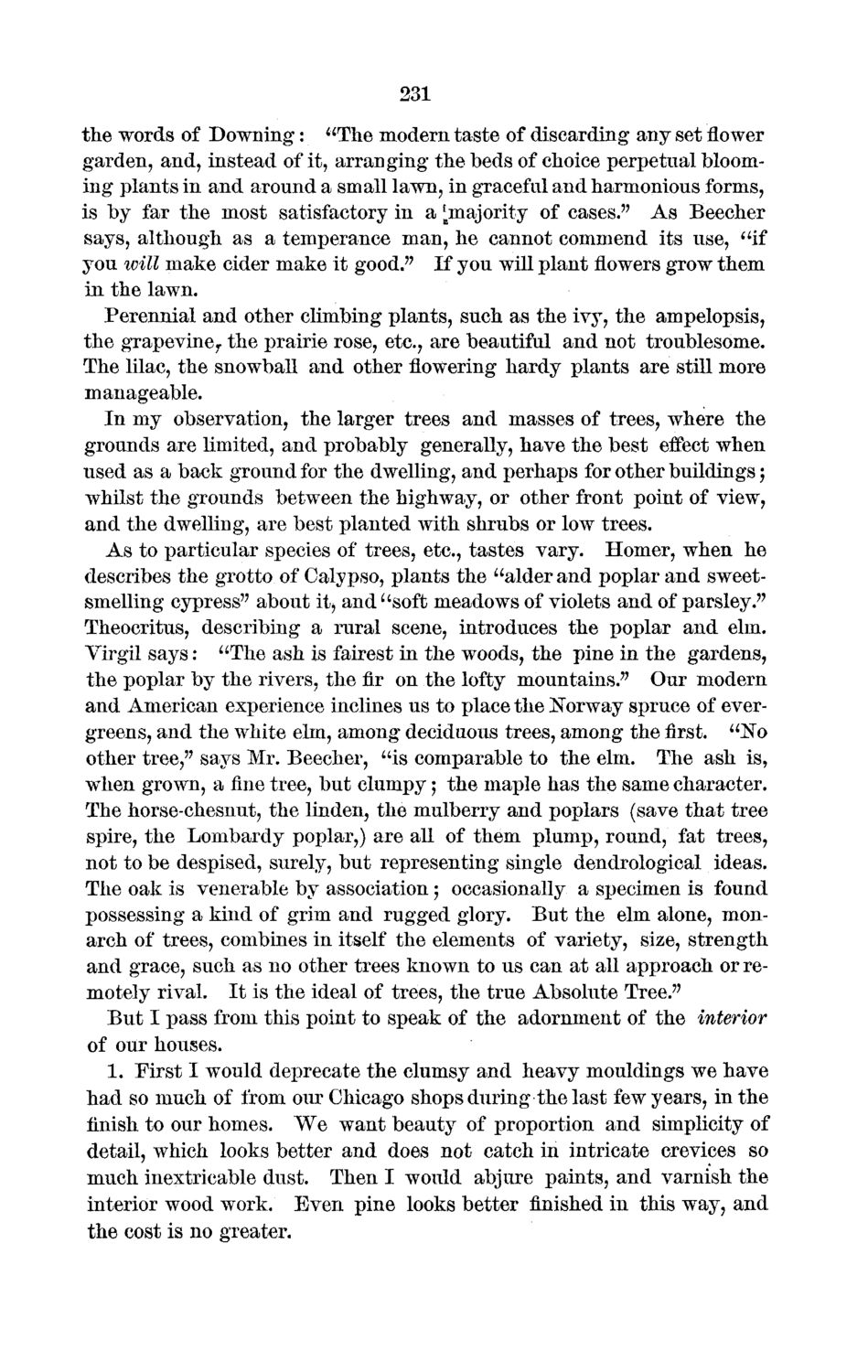| |
| |
Caption: Board of Trustees Minutes - 1872
This is a reduced-resolution page image for fast online browsing.

EXTRACTED TEXT FROM PAGE:
231 the words of Downing: "The modern taste of discarding any set flower garden, and, instead of it, arranging the beds of choice perpetual blooming plants in and around a small lawn, in graceful and harmonious forms, is by far the most satisfactory in a fBmajority of cases." As Beecher says, although as a temperance man, he cannot commend its use, "if you will make cider make it good." If you will plant flowers grow them in the lawn. Perennial and other climbing plants, such as the ivy, the ampelopsis, the grapevine r the prairie rose, etc., are beautiful and not troublesome. The lilac, the snowball and other flowering hardy plants are still more manageable. In my observation, the larger trees and masses of trees, where the grounds are limited, and probably generally, have the best effect when used as a back ground for the dwelling, and perhaps for other buildings ; whilst the grounds between the highway, or other front point of view, and the dwelling, are best planted with shrubs or low trees. As to particular species of trees, etc., tastes vary. Homer, when he describes the grotto of Calypso, plants the "alder and poplar and sweetsmelling cypress" about it> and "soft meadows of violets and of parsley." Theocritus, describing a rural scene, introduces the poplar and elm. Yirgil says: "The ash is fairest in the woods, the pine in the gardens, the poplar by the rivers, the fir on the lofty mountains." Our modern and American experience inclines us to place the Norway spruce of evergreens, and the white elm, among deciduous trees, among the first. "No other tree," says Mr. Beecher, "is comparable to the elm. The ash is, wiien grown, a fine tree, but clumpy; the maple has the same character. The horse-chesnut, the linden, the mulberry and poplars (save that tree spire, the Lombardy poplar,) are all of them plump, round, fat trees, not to be despised, surely, but representing single dendrological ideas. The oak is venerable by association $ occasionally a specimen is found possessing a kind of grim and rugged glory. But the elm alone, monarch of trees, combines in itself the elements of variety, size, strength and grace, such as no other trees known to us can at all approach or remotely rival. It is the ideal of trees, the true Absolute Tree." But I pass from this point to speak of the adornment of the interior of our houses. 1. First I would deprecate the clumsy and heavy mouldings we have had so much of from our Chicago shops during the last few years, in the finish to our homes. We want beauty of proportion and simplicity of detail, which looks better and does not catch in intricate crevices so much inextricable dust. Then I would abjure paints, and varnish the interior wood work. Even pine looks better finished in this way, and the cost is no greater.
| |